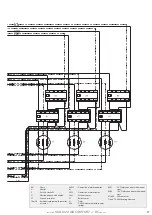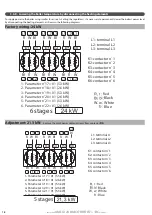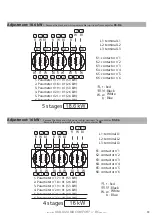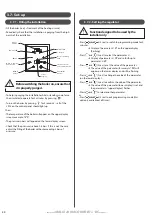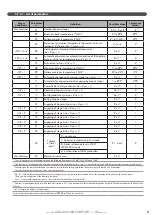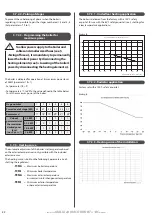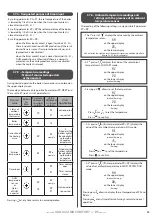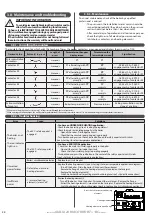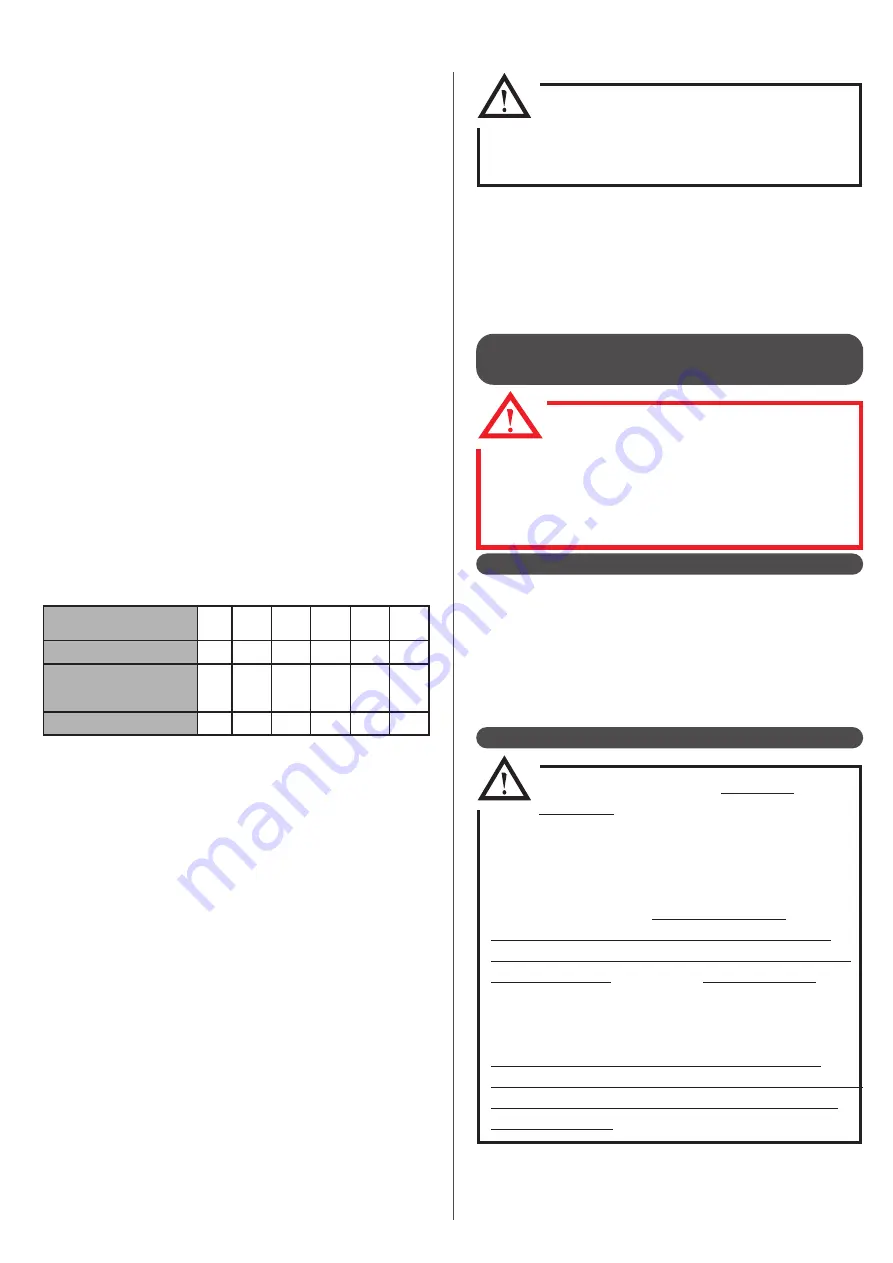
-
installer
GIALIX 24 MA C -BC
manual
-
-
installer
GIALIX 24 MA C -BC
manual
-
9
3.3 - Treatment of the water in the
heating circuit
In order for the installation to allow for continuous purging,
automatic purgers must be placed at each high point of the
installation and manual purgers must be placed on each
radiator.
• Desludging tank
Plan for a desludging tank with a sufficient volume at a low point
of the installation to be placed on the heating circuit inlet. This
tank should be equipped with a drain so it can collect the oxides,
particles, and scale which become detached from the internal
walls of the heating circuit while the boiler is in operation.
• Safety valve discharge
The connections and piping must be installed using materials
which are resistant to corrosion.
• Preparing the hydraulic circuit (rinsing)
Before installing the boiler, the installation must be rinsed
with an appropriate product. This allows to eliminate all traces
of debris such as: soldering waste, joint filler, grease, sludge,
metallic particles, etc..., in the radiators, underfloor heating, etc...
This prevents any debris from travelling into the boiler’s heating
body.
• Expansion vessel and safety valve set to 3 bars
The
Gialix
boiler is equipped with an 8 litre expansion vessel
(pre-inflated to 1.5 bars) and with a safety valve set at 3 bars.
Depending on the pressure head of the installation, it might be
necessary to adjust the expansion vessel’s pre-inflated pressure
and to check that the 8 litre capacity corresponds to the volume
of the installation.
• Frost protection
If the boiler is being switched off for an extended period of time
in the winter (e.g., second residence, etc...), it is necessary to have
protection from frost or ice in place.
• Underfloor heating
It is mandatory to install a 65
o
C safety aquastat (LTP) with
manual reset on the underfloor heating outlet. This aquastat
must be able to cut the general electricity supply to the boiler.
• Thermostatic mxing valve
These valves should primarily be used in rooms benefitting from
larger amounts of heat gains.
If an installation is equipped with both thermostatic mixing
valves and an ambient temperature thermostat, the room where
the thermostat is located
must
have the radiator(s) equipped
with manual valve(s).
In the case of an installation with «all
thermostatic mixing valves», it is necessary
to plan for the use of a bypass function
(e.g.: a differential valve).
It is
imperative
to refer to the installation instructions for
the placement and mounting of the ambient temperature
thermostat to ensure satisfactory operation.
• Purging
Periodically chack that air is being purged from the high points
of the hydraulic installation.
3.3.1 - Filling water
3.3.2 - Treatment of the heating circuit
The materials used for the production of a heting circuit are of
differing natures. These properties can create a phenomena of
corrosion through the creation of a galvanic bridge in both new
and existing installations.
The filling of the heating circuit must be done only with water
from the domestic water network using untreated water (no
water softener). Using water from any other source (well water,
rainwater, etc...) renders the warranty null and void.
Central heating systems MUST BE
CLEANED to eliminate debris (copper,
fibres, soldering fluxes) related to set-up and
installation, as well as to avoid chemical reactions
between the metals.
It is also important to TO PROTECT THE
CENTRAL HEATING SYSTEM AGAINST RISKS
OF: CORROSION, LIMESCALE, AND MICROBIAL
DEVELOPMENT by using an APPROPRIATE
corrosion inhibitor for all types of installations
(steel or cast iron radiators, underfloor heating).
PRODUCTS USED FOR THE TREATMENT OF
HEATING WATER USED MUST COMPLY WITH ALL
NATIONAL STANDARDS IN THE COUNTRY OF
INSTALLATION.
We recommend the use of products in the SENTINEL range for
preventative and curative treatment of the heating circuit.
Pressure head of the
installation
2.5
5
7.5
10
12.5
15
Pre-inflated pressure (bars)
(1)
0.25
0.5
0.75
1
1.25
1.5
Maximum volume of water
of the installation covered by
the 8 litre expansion vessel
(2)
152
138
125
111
97
83
Expansion factor
(3)
0.05 0.058 0.064 0.072 0.083 0.096
(1)
Deflate and inspect the pressure of the vessel if necessary
(2)
Count 11 litres per kW of heating capacity for steel radiators
13 litres per kW of heating capacity for cast iron radiators
17 litres per kW of heating capacity for underfloor heating
(3)
For installations with a large volume of water, multiply this volume by the expansion
factor corresponding to the pre-inflated pressure to obtain the minimum volume of
expansion vessel needed. If necessary, add an additional expansion vessel to the expansion
vessel already provided in the boiler.
It is MANDATORY to read the additional
document concerning the quality of
water used for filling the installation.This
document is included with this manual as well as
in the packet with the warranty information.
This document also contains information which is
PERTINENT to the WARRANTY of the material.
Содержание 132616
Страница 3: ... installer GIALIX 24 MA COMFORT BCmanual 3 ...
Страница 31: ... installer GIALIX 24 MA COMFORT BCmanual 31 ...

















